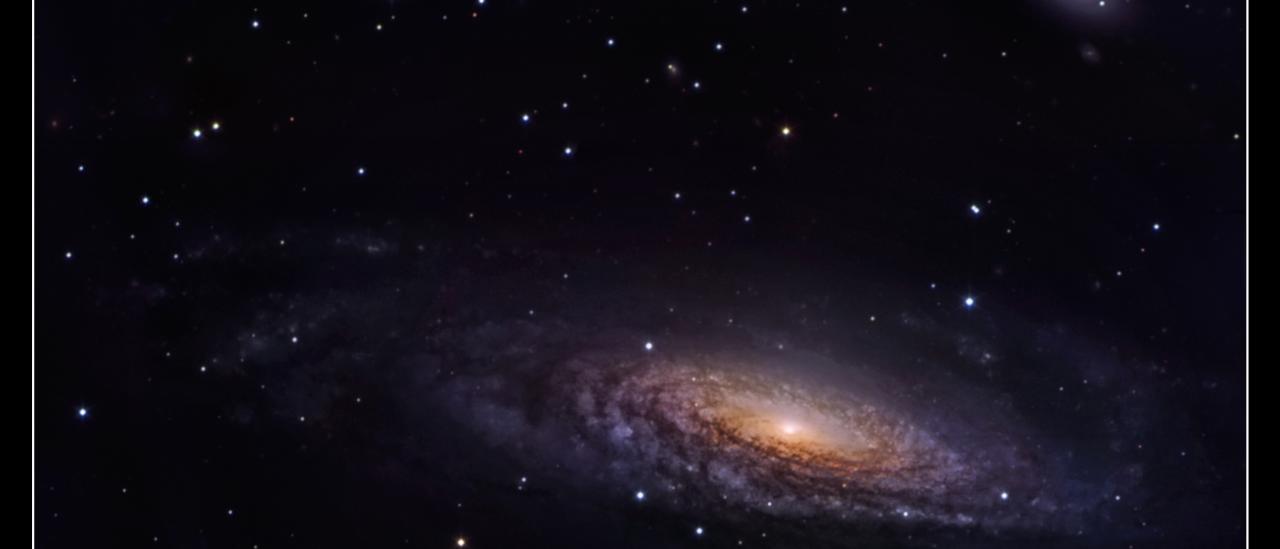NGC 7331 is a unbarred spiral galaxy about 40 million light-years (12 Mpc) away in the constellation Pegasus. NGC 7331 is similar in size, shape, and mass to the Milky Way. It also has a comparable star formation rate, hosts a similar number of stars, has a central supermassive black hole and comparable spiral arms. The primary difference between both galaxies is that NGC 7331 is an unbarred spiral galaxy, it lacks a "bar" of stars, gas and dust cutting through its nucleus, as we see in the Milky Way. Its central bulge also displays a quirky and unusual rotation pattern, spinning in the opposite direction to the galactic disc itself. By studying similar galaxies we are able to build a better understanding of our galactic environment which we cannot always observe, and of galactic behaviour and evolution as a whole. NGC 7331 was discovered by William Herschel in 1784. It is not included in Charles Messier's famous 18th century catalog. NGC 7331 is the brightest member of the NGC 7331 Group of galaxies also known as the Deer Lick Group. The other members of the group are the lenticular or unbarred spirals NGC 7335 and 7336, the barred spiral galaxy NGC 7337 and the elliptical galaxy NGC 7340. The background galaxies are about one tenth the apparent size of NGC 7331 and so lie roughly ten times farther away. Their close alignment on the sky with NGC 7331 occurs just by chance. In the image of NGC 7331, the core of the galaxy appears to be slightly off-center, with one side of the disk appearing to extend further away from the core than the opposite side.
|
Object Name: |
NGC 7331 |
|
Telescope: |
Grantecan / Nasmyth-B |
|
Instrument: |
OSIRIS |
|
Filter: |
G (481nm), R (641nm), I (770nm), Z (970nm), OS657 (657nm, FHWM 35nm) |
|
Color: |
Blue (G), Green (Blue+Red), Red (R+I+Z), Yellow (OS657) |
|
Exposure: |
4 x 45 secs (G, R, I and Z), 4 x 75 secs (OS657) |
|
Field of View: |
Approx. 13' x 13' |
|
Orientation: |
North is right, East is up |
|
Position: |
RA(J2000.0) = 22h37m04s Dec(J2000.0) = +34°24'56" |
